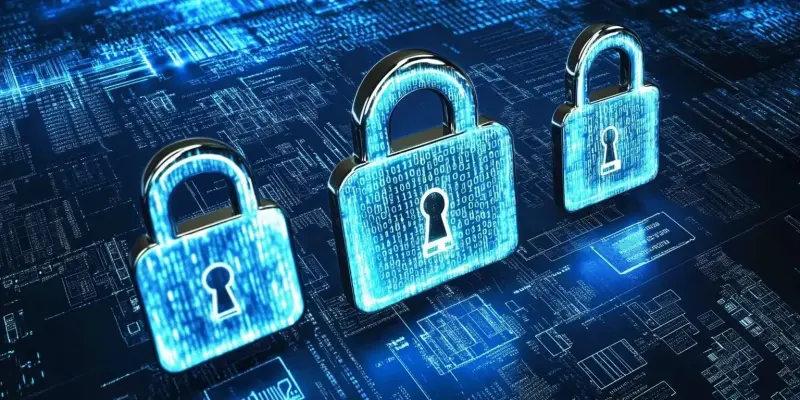Cybercrime is increasingly one of the most significant threats to businesses around the world, costing millions each year. But it’s not just about the financial consequences. A hack could lead to exposed trade secrets, regulatory fines, lawsuits, and loss of consumer trust and overall brand reputation. Organizations need to stay ahead by continuously reviewing, preparing, and innovating their cybersecurity measures. Here are expert-backed tips to strengthen your cyber defenses and protect your business effectively.
Educate users effectively
Employees are your organization’s first line of defense against cyber threats – whether they’re managing visitor logs or handling classified documents. Continuous user education is critical to making employees aware of the risks and consequences associated with cyber attacks. Human error is often a business’s primary vulnerability. Employees might let down their guard, thinking they have nothing useful for a cybercriminal to take. However, these individuals can be used as the gateway into their organization. Personal information shared on social media can be used to create highly personalized attacks that compromise security.
Education should not just be a one-time event. It should be a continuous process with regular updates on the latest developments and threats to watch out for. Leveraging immersive and interactive training sessions can help employees stay alert and informed. This ongoing education ensures that employees are always aware of the latest tactics used by cybercriminals and the best practices to counter them. Organizations need to invest in comprehensive training programs and workshops that keep employees engaged and up-to-date with cybersecurity trends.
Empower employees to confidently decline
For businesses, email compromise is the most prominent cybersecurity threat. Examples of this include fake invoices or requests to transfer money, often appearing to come from trusted sources. An email from a familiar contact isn’t always legitimate. Email compromise typically occurs through phishing, where attackers trick employees into revealing sensitive information or clicking on malicious links. Once they gain access, cybercriminals can manipulate email threads, impersonate executives, and divert funds.
It is essential to empower employees to confidently decline actions that deviate from established business processes. If they’re following agreed business processes, even if it’s the CEO requesting an urgent funds transfer, they shouldn’t fear getting in trouble. Use well-defined, well-documented processes within your organization as a measure to detect and defeat such attacks, even if you don’t have sophisticated tools. By creating a culture where employees feel secure in saying no to suspicious requests, businesses can protect themselves against fraudulent activities.
Implement practical training
While most organizations offer cybersecurity training through online modules, one of the most effective ways to prepare employees for the reality of a cyber-attack is an immersive simulation. Interactive training helps employees test their knowledge and identify weaknesses in a safe and controlled environment. Practical exercises engage employees directly with a cyber-attack, allowing them to see the consequences of their decisions play out in real-time.
One example of effective practical training is an immersive cybersecurity tabletop exercise where participants are placed in various organizational roles and guided through simulated cyber-attack scenarios. Participants gain hands-on experience without the risk, gaining tangible insights and experience. It is important that these practical exercises exist to ensure that employees can react appropriately during actual incidents. By engaging directly with a simulated attack, participants get a better understanding of how to mitigate risks and protect sensitive information.
Safeguard your customers proactively
Cybersecurity breaches are not just about losing financial assets. Organizations also put their brand reputation and consumer trust at risk. When we talk about cybersecurity, trust is a huge thing. A cyber-attack affects more than just data – it impacts public trust, investors, and other stakeholders. It’s hard enough getting people to trust the quality of your product or service, let alone regain it when breaches happen. Therefore, safeguarding customer data has become crucial for maintaining a positive reputation.
One way to build consumer trust is to show that their cybersecurity is actively being considered. For example, organizations can ensure that multi-factor authentication is available for customer logins and that users can easily control the data that is being collected. By taking such proactive measures, businesses can demonstrate their commitment to protecting customer information, building trust and loyalty in the process. Implementing such safeguards also provides an additional layer of protection that makes it harder for cybercriminals to succeed in their attacks.
Prepare for the worst-case scenario
Cybercrime is rapidly becoming one of the biggest threats to businesses worldwide, resulting in millions of dollars in losses annually. However, the financial impact is only part of the problem. A cyberattack can expose sensitive trade secrets, lead to regulatory penalties, spark lawsuits, and cause a significant loss of consumer trust and damage to your overall brand reputation. To combat these risks, organizations must stay proactive by consistently evaluating, updating, and advancing their cybersecurity strategies. Key approaches include maintaining robust firewalls, regular employee training on security best practices, and investing in the latest security technologies. It’s also essential to conduct frequent security audits and develop a response plan for potential breaches. By following these expert-backed recommendations, businesses can significantly strengthen their cyber defenses and ensure better protection against threats, thereby safeguarding their operations and customer data more effectively.

